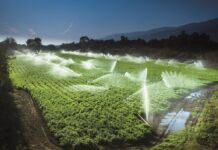Intel has set out a new strategy and goals for 2030 in its latest annual corporate sustainability report, with aims for the next decade including achieving net positive water use.
Other corporate sustainability aims are to move entirely to ‘green’ power and to achieve zero waste to landfills across the company’s global manufacturing operations, as well as doubling the number of women and underrepresented minorities in senior leadership roles and scaling the impact of its supply chain human rights programmes.
Manufacturing semiconductors is a water-intensive process – ultrapure water is used to remove impurities from the silicon wafers, and industrial and reclaimed water is used in Intel’s manufacturing plant systems.
According to the company, it has spent 20 years refining its water use and it says it has been able to restore about 80% of its original water use to the community. The focus now is on achieving 100% restoration.
The company says it funds collaborative projects to support local watersheds, with the aim of restoring water in amounts equal to the water it uses to close the gap in its water balance. According to Intel, these projects are either focused on agriculture, conservation, or in-stream flow protection, and they support communities, the economy, and the environment and address local water issues.
To date, Intel says it has funded projects that will restore an estimated 1.8 billion gallons per year (BGY) of water when complete. Of these, 11 projects were finalised by the end of 2019 and 1 BGY of water was restored in 2018 and 2019 together. The company has pledged to evaluate and adjust its volumetric target annually, because its future water consumption may change.
Locations of the 24 water restoration projects funded so far include Arizona, California, New Mexico, and Oregon in the US, and in Bangalore, in India. The company is building a massive new water recycling plant in Hillsboro, Oregon, which will be able to recycle 1 billion gallons of water a year when complete in 2021.







